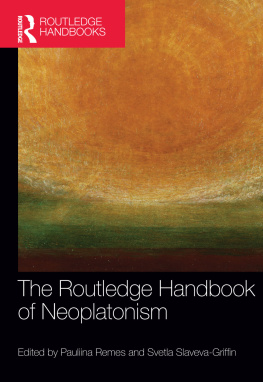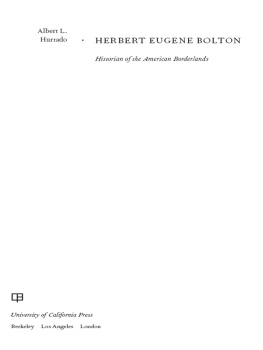I.
PROGRESS: ITS LAW AND CAUSE.
Table of Contents
The current conception of Progress is somewhat shifting and indefinite. Sometimes it comprehends little more than simple growthas of a nation in the number of its members and the extent of territory over which it has spread. Sometimes it has reference to quantity of material productsas when the advance of agriculture and manufactures is the topic. Sometimes the superior quality of these products is contemplated: and sometimes the new or improved appliances by which they are produced. When, again, we speak of moral or intellectual progress, we refer to the state of the individual or people exhibiting it; while, when the progress of Knowledge, of Science, of Art, is commented upon, we have in view certain abstract results of human thought and action. Not only, however, is the current conception of Progress more or less vague, but it is in great measure erroneous. It takes in not so much the reality of Progress as its accompanimentsnot so much the substance as the shadow. That progress in intelligence seen during the growth of the child into the man, or the savage into the philosopher, is commonly regarded as consisting in the greater number of facts known and laws understood: whereas the actual progress consists in those internal modifications of which this increased knowledge is the expression. Social progress is supposed to consist in the produce of a greater quantity and variety of the articles required for satisfying men's wants; in the increasing security of person and property; in widening freedom of action: whereas, rightly understood, social progress consists in those changes of structure in the social organism which have entailed these consequences. The current conception is a teleological one. The phenomena are contemplated solely as bearing on human happiness. Only those changes are held to constitute progress which directly or indirectly tend to heighten human happiness. And they are thought to constitute progress simply because they tend to heighten human happiness. But rightly to understand progress, we must inquire what is the nature of these changes, considered apart from our interests. Ceasing, for example, to regard the successive geological modifications that have taken place in the Earth, as modifications that have gradually fitted it for the habitation of Man, and as therefore a geological progress, we must seek to determine the character common to these modificationsthe law to which they all conform. And similarly in every other case. Leaving out of sight concomitants and beneficial consequences, let us ask what Progress is in itself.
In respect to that progress which individual organisms display in the course of their evolution, this question has been answered by the Germans. The investigations of Wolff, Goethe, and Von Baer, have established the truth that the series of changes gone through during the development of a seed into a tree, or an ovum into an animal, constitute an advance from homogeneity of structure to heterogeneity of structure. In its primary stage, every germ consists of a substance that is uniform throughout, both in texture and chemical composition. The first step is the appearance of a difference between two parts of this substance; or, as the phenomenon is called in physiological language, a differentiation. Each of these differentiated divisions presently begins itself to exhibit some contrast of parts; and by and by these secondary differentiations become as definite as the original one. This process is continuously repeatedis simultaneously going on in all parts of the growing embryo; and by endless such differentiations there is finally produced that complex combination of tissues and organs constituting the adult animal or plant. This is the history of all organisms whatever. It is settled beyond dispute that organic progress consists in a change from the homogeneous to the heterogeneous.
Now, we propose in the first place to show, that this law of organic progress is the law of all progress. Whether it be in the development of the Earth, in the development of Life upon its surface, in the development of Society, of Government, of Manufactures, of Commerce, of Language, Literature, Science, Art, this same evolution of the simple into the complex, through successive differentiations, holds throughout. From the earliest traceable cosmical changes down to the latest results of civilization, we shall find that the transformation of the homogeneous into the heterogeneous, is that in which Progress essentially consists.
With the view of showing that if the Nebular Hypothesis be true, the genesis of the solar system supplies one illustration of this law, let us assume that the matter of which the sun and planets consist was once in a diffused form; and that from the gravitation of its atoms there resulted a gradual concentration. By the hypothesis, the solar system in its nascent state existed as an indefinitely extended and nearly homogeneous mediuma medium almost homogeneous in density, in temperature, and in other physical attributes. The first advance towards consolidation resulted in a differentiation between the occupied space which the nebulous mass still filled, and the unoccupied space which it previously filled. There simultaneously resulted a contrast in density and a contrast in temperature, between the interior and the exterior of this mass. And at the same time there arose throughout it rotatory movements, whose velocities varied according to their distances from its centre. These differentiations increased in number and degree until there was evolved the organized group of sun, planets, and satellites, which we now knowa group which presents numerous contrasts of structure and action among its members. There are the immense contrasts between the sun and planets, in bulk and in weight; as well as the subordinate contrasts between one planet and another, and between the planets and their satellites. There is the similarly marked contrast between the sun as almost stationary, and the planets as moving round him with great velocity; while there are the secondary contrasts between the velocities and periods of the several planets, and between their simple revolutions and the double ones of their satellites, which have to move round their primaries while moving round the sun. There is the yet further strong contrast between the sun and the planets in respect of temperature; and there is reason to suppose that the planets and satellites differ from each other in their proper heat, as well as in the heat they receive from the sun.
When we bear in mind that, in addition to these various contrasts, the planets and satellites also differ in respect to their distances from each other and their primary; in respect to the inclinations of their orbits, the inclinations of their axes, their times of rotation on their axes, their specific gravities, and their physical constitutions; we see what a high degree of heterogeneity the solar system exhibits, when compared with the almost complete homogeneity of the nebulous mass out of which it is supposed to have originated. Passing from this hypothetical illustration, which must be taken for what it is worth, without prejudice to the general argument, let us descend to a more certain order of evidence. It is now generally agreed among geologists that the Earth was at first a mass of molten matter; and that it is still fluid and incandescent at the distance of a few miles beneath its surface. Originally, then, it was homogeneous in consistence, and, in virtue of the circulation that takes place in heated fluids, must have been comparatively homogeneous in temperature; and it must have been surrounded by an atmosphere consisting partly of the elements of air and water, and partly of those various other elements which assume a gaseous form at high temperatures. That slow cooling by radiation which is still going on at an inappreciable rate, and which, though originally far more rapid than now, necessarily required an immense time to produce any decided change, must ultimately have resulted in the solidification of the portion most able to part with its heatnamely, the surface. In the thin crust thus formed we have the first marked differentiation. A still further cooling, a consequent thickening of this crust, and an accompanying deposition of all solidifiable elements contained in the atmosphere, must finally have been followed by the condensation of the water previously existing as vapour. A second marked differentiation must thus have arisen: and as the condensation must have taken place on the coolest parts of the surfacenamely, about the polesthere must thus have resulted the first geographical distinction of parts. To these illustrations of growing heterogeneity, which, though deduced from the known laws of matter, may be regarded as more or less hypothetical, Geology adds an extensive series that have been inductively established. Its investigations show that the Earth has been continually becoming more heterogeneous in virtue of the multiplication of the strata which form its crust; further, that it has been becoming more heterogeneous in respect of the composition of these strata, the latter of which, being made from the detritus of the older ones, are many of them rendered highly complex by the mixture of materials they contain; and that this heterogeneity has been vastly increased by the action of the Earth's still molten nucleus upon its envelope, whence have resulted not only a great variety of igneous rocks, but the tilting up of sedimentary strata at all angles, the formation of faults and metallic veins, the production of endless dislocations and irregularities. Yet again, geologists teach us that the Earth's surface has been growing more varied in elevationthat the most ancient mountain systems are the smallest, and the Andes and Himalayas the most modern; while in all probability there have been corresponding changes in the bed of the ocean. As a consequence of these ceaseless differentiations, we now find that no considerable portion of the Earth's exposed surface is like any other portion, either in contour, in geologic structure, or in chemical composition; and that in most parts it changes from mile to mile in all these characteristics.












